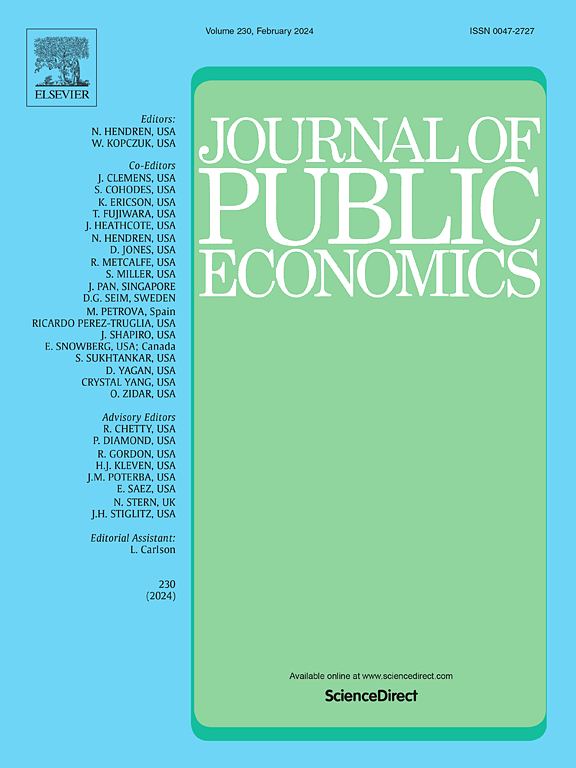Welfare in the volunteer’s dilemma
IF 3.4
1区 经济学
Q1 ECONOMICS
引用次数: 0
Abstract
We study the volunteer’s dilemma with heterogeneous costs and private information. We characterize efficiency properties of equilibrium. While the probability of success – the focus of previous theoretical analysis – may be strictly decreasing in group size, per-capita welfare is always increasing for every possible cost, strictly for sufficiently high costs. As group size increases, the expected utility of every member, regardless of their cost, converges to the expected utility of a member with the lowest possible cost, which is the same expected utility when there is no free rider problem, i.e., with only a single player in the game who has the lowest possible cost. Convergence, however, is slower than the convergence to zero of , so the total inefficiency diverges at infinity, even if the lowest cost is zero.
志愿者困境中的福利
研究了具有异质性成本和私有信息的志愿者困境。我们描述了平衡的效率特性。虽然成功的可能性- -以前的理论分析的重点- -在群体规模上可能严格地减少,但对于每一种可能的成本,人均福利总是增加的,严格地说,对于足够高的成本。随着群体规模的增加,无论成本如何,每个成员的期望效用都收敛于成本最低的成员的期望效用,这与不存在搭便车问题(即博弈中只有一个成本最低的参与者)时的期望效用相同。然而,收敛速度比收敛到0 (1/n)的速度要慢,因此,即使最低成本为零,总效率也会在无穷远处发散。
本文章由计算机程序翻译,如有差异,请以英文原文为准。
求助全文
约1分钟内获得全文
求助全文
来源期刊

Journal of Public Economics
ECONOMICS-
CiteScore
14.10
自引率
2.00%
发文量
139
审稿时长
70 days
期刊介绍:
The Journal of Public Economics aims to promote original scientific research in the field of public economics, focusing on the utilization of contemporary economic theory and quantitative analysis methodologies. It serves as a platform for the international scholarly community to engage in discussions on public policy matters.
 求助内容:
求助内容: 应助结果提醒方式:
应助结果提醒方式:


